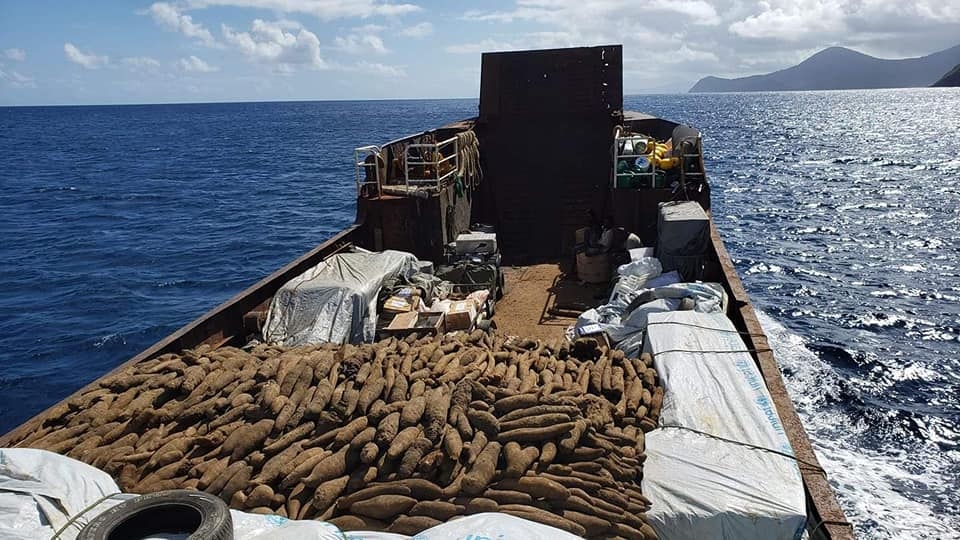The global impacts of COVID-19 are unprecedented and extend beyond the realm of health into the social, economic and psychological aspects of people’s lives. Although the number of infections in Pacific Island Countries (PICs) may be low because of their relative isolation, they still cannot escape the consequences of the economic free-fall emanating from the lockdowns. The sudden demise of tourism, a major money earner for many island states; loss of jobs and income; decline in remittances and the dramatic shrinking of investment and economic opportunities have left families devastated and governments’ resources stretched to the limit.
In many ways, the pandemic merely exacerbates the existing economic challenges and further deepens the poverty and vulnerability that many Pacific peoples have been experiencing anyway. It exposes in more blatant ways some pre-existing social, economic and gender inequities. Those in vulnerable employment such as the hospitality industry, infrastructure, construction and manufacturing and those in the informal sector are amongst the first victims of the economic squeeze. The aid, debt and remittance-based Pacific economies are struggling to respond effectively as many do not have the means to provide wage subsidy and stimulus packages similar to those implemented by industrialised neighbours like Australia and New Zealand. This should signal the need for new innovative strategies and models of development that have the capacity to respond effectively to disasters and crisis; a strategy that requires identifying and building on local strengths and innovations.
One of the unique characteristics of Pacific communities is the dynamic interrelationship between traditional subsistence production and the market system. The subsistence sector in the Pacific has a significant role in providing subsidies for cash income, as well as a socio-economic cushion in times of crisis, as we saw during the 2008 global meltdown. There is almost a collective intuition to revert to community-embedded survival values and strategies when crisis occurs. For instance, the resurrection of the age-old reciprocity system which is now being enthusiastically embraced in Fiji (Barter for Better Fiji) to counter the cash shortfall; the rush to promote backyard subsistence farming; and re-engineering of indigenous social protection systems of support, shows that the basis of resilience is locked within local cultural and innovation systems. The challenge is, how do we incorporate these values of resilience into the formal policy process?
Perhaps, it is time for a dialogue between the indigenous systems of production and the formal sector in framing an innovative, equitable, resilient and sustainable system, which is capable of withstanding the potentially devastating impact of economic and social risks along the lines of the Sustainable Development Goals. The SDGs provide some universal pathways for equity, resilience, empowerment, diversity, people-centered development and progressive transformation. Amongst some possible strategies for resilience, equity and sustainability would be how to utilise local resources and knowledge which requires community participation, empowerment and benefits. For instance, today, indigenous knowledge of medicinal plants and resources constitute a major portion of the multimillion-dollar pharmaceutical industry, but very little benefits trickle down to the knowledge and resource owners. The UN-affiliated World Intellectual Property Organization (WIPO) has been at the forefront of protecting these indigenous resources and knowledge from biopiracy.
Hence, rethinking new development strategies should also consider local innovations, community resources and indigenous knowledge and marry these with macro forms of institutional governance and development, which can be resilient yet empowering. As the remittance tap slows to a trickle, tourism and the travel industry collapses, as hundreds and thousands lose their jobs (as we witnessed with Fiji Airways) and as poverty and inequality increases, it is time to rethink innovatively about our future development strategies, especially strengthening the social and solidarity economy.
The pandemic has also put the spotlight on the need for PICs to strengthen their social protection strategies, seriously address the issues of inequity and cut down on their national debts and expenditure to respond more effectively to major disasters such as the one we are facing now. What we need are not incremental and token adjustments that only serve the interest of a few, but major conceptual and structural transformations for the betterment of entire communities.
SDGs response
The SDGs’ strategies for equity, inclusivity and empowerment has become even more relevant and imperative in these times of the pandemic crisis. A UNDP report ‘Position Note on the Social and Economic Impacts of COVID-19 in Asia-Pacific’ calls on countries in the region to avoid returning to some pre-pandemic unsustainable development paths and to capitalise on the opportunity to pursue innovative alternatives.
From the point of view of PICs, the pandemic has strengthened the SDGs moral authority as a guiding light for sustainability and resilience – and the challenge is how countries can ensure that their responses are comprehensive as well as equitable and inclusive, so that no one is left behind.
The Pacific is part of the global system and thus all these require both local innovations and global support, because the impact of the virus is global. Meanwhile, defeating the pandemic is the immediate aim and the words of UNDP Administrator, Achim Steiner, may provide us the means to do it; “We must act in borderless solidarity to defeat it.”
Emily Moli is a Knowledge Communications Analyst, UNDP Pacific Office in Fiji. The views and opinions expressed here are those of the author, and do not necessarily reflect the official policy or position of the UNDP.
